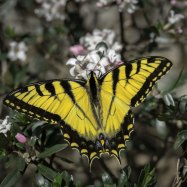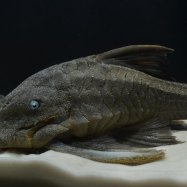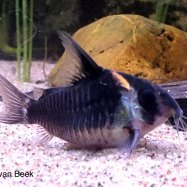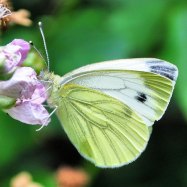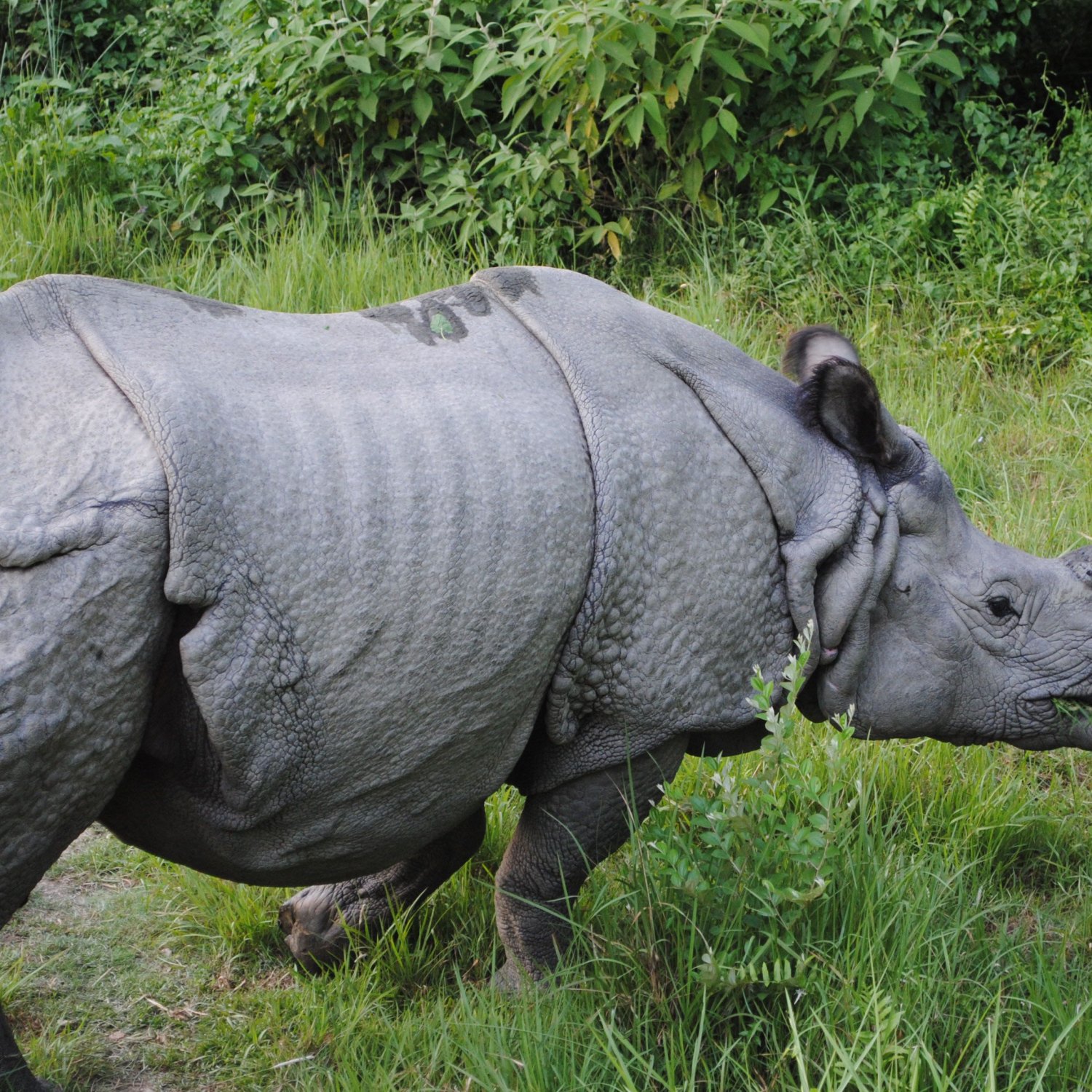
Indian Rhinoceros
3.5 to 4 meters
The Indian Rhinoceros, found in Kaziranga National Park (India) and Chitwan National Park (Nepal), is the world's second-largest land mammal. With a length of 3.5 to 4 meters and a large, stocky body, it belongs to the Rhinocerotidae family. Despite its size, this gentle giant is herbivorous and plays a crucial role in maintaining the ecosystem of its habitat. #IndianRhinoceros #KazirangaNationalPark #ChitwanNationalPark #Rhinocerotidae #wildlife
Animal Details Summary:
Common Name: Indian Rhinoceros
Kingdom: Animalia
Habitat: Grasslands, swamps, and forests
The Majestic Indian Rhinoceros: A True Symbol of Resilience
The Indian Rhinoceros, also known as the one-horned rhinoceros, is a magnificent creature that roams the grasslands, swamps, and forests of Northeastern India and Nepal. Despite facing numerous challenges in its conservation and protection, this gentle giant has managed to survive and continues to be a symbol of resilience.Scientifically known as Rhinoceros unicornis, this species belongs to the Animalia kingdom and Chordata phylum. It falls under the class Mammalia and order Perissodactyla Indian Rhinoceros. The Indian Rhinoceros is a member of the Rhinocerotidae family, which includes other rhino species such as the white rhino, black rhino, and Javan rhino.
Native to India and Nepal, the Indian Rhinoceros can be found in two main locations: the Kaziranga National Park in India and the Chitwan National Park in Nepal. It is estimated that there are around 3,500 Indian Rhinos remaining in the wild, with 82% of them living in the Kaziranga National Park alone.
Habitat and Feeding Habits
The Indian Rhinoceros is primarily a herbivore, meaning it mainly feeds on plants. It has a specialized diet, which includes grasses, fruits, leaves, and aquatic plants. Its preferred habitat consists of tropical and subtropical grasslands, swamps, and forests.The Kaziranga National Park and Chitwan National Park provide the perfect habitat for these rhinos, with an abundance of food sources and suitable living conditions. Both parks have rivers and ponds that are essential for the Indian Rhinoceros as they require frequent wallowing in water to regulate their body temperature and protect themselves from the hot climate.
Unlike other rhinoceros species that tend to be solitary animals, Indian Rhinos are more social and can be found in groups called "crashes Insects." These groups are usually made up of females and their young, with a dominant male overseeing and protecting the group.
Appearance and Physical Characteristics
The Indian Rhinoceros is known for its distinct appearance, with a single horn on its snout and thick, armor-like skin. Its horn can grow up to 60 centimeters, and even though it is made of keratin (the same material as our fingernails), it is still highly valued in traditional medicine, making the rhino a target for poachers.Indian Rhinos have a grey to brown coloration, with a thick, folded skin that provides protection against predators and helps them retain moisture in their bodies. Their body shape is large and stocky, with short legs and a broad chest. Adult males can reach a length of 3.5 to 4 meters and weigh between 2,000 to 2,700 kilograms, making them the largest of all rhino species in Asia.
Conservation Status and Threats
The Indian Rhinoceros has faced numerous threats throughout history, with its population declining drastically due to human activities such as poaching, habitat loss and fragmentation, and human-wildlife conflict.In the late 19th and early 20th centuries, the Indian Rhino was on the brink of extinction, with only 200 individuals remaining in the wild. The population has slowly recovered thanks to conservation efforts, but it is still listed as Vulnerable on the IUCN Red List.
One of the biggest threats to the Indian Rhinoceros is poaching, driven by the high demand for their horns in traditional medicine. Despite strict laws and measures in place to protect these animals, poaching remains a significant issue, with some incidents resulting in the loss of entire rhino populations in certain areas.
Habitat loss and fragmentation due to human activities such as agriculture, development, and infrastructure projects have also taken a toll on the Indian Rhino. As their habitat decreases, rhinos are forced into smaller areas, resulting in increased competition for food and space and conflicts with humans.
Conservation Efforts and Success Stories
Thankfully, numerous conservation efforts have been put in place to protect and conserve the Indian Rhino. Government agencies, non-governmental organizations, and local communities have come together to work towards securing a safe future for these animals.The Indian government has implemented strict laws and increased patrols in national parks to combat poaching. They have also introduced initiatives such as relocating rhinos to other locations and establishing special task forces to protect these animals.
Local communities have also played a crucial role in conservation efforts, with some taking up roles as rhino protectors and guides in national parks. These efforts have not only helped protect the rhinos but have also provided economic benefits for the local communities.
One of the most significant success stories in Indian Rhino conservation is the Kaziranga National Park. This park has managed to increase its Indian Rhino population from a mere 200 to over 2,500 individuals, making it the highest concentration of Indian Rhinos in the world. This success can be attributed to the strict protection measures in place and the involvement of local communities in conservation efforts.
Why the Indian Rhino is Important
Aside from being a majestic and fascinating animal, the Indian Rhino plays an essential role in its ecosystem. As a herbivore, it helps in maintaining the balance in plant populations, and as a large animal, it also creates pathways for other animals in its habitat, promoting biodiversity.Furthermore, the Indian Rhino is an important cultural symbol and a source of national pride in India and Nepal. It is often featured in traditional art, and its image can be found on numerous national emblems, including the Indian 20-rupee coin.
The Future of the Indian Rhino
Despite the challenges it has faced, the Indian Rhino continues to thrive and inspire people. It serves as a beacon of hope, showcasing that with proper conservation efforts and community involvement, it is possible to protect and conserve endangered species.However, the fight for the Indian Rhino's survival is far from over, and it requires ongoing efforts and support from governments, organizations, and individuals. By raising awareness about the threats faced by these animals and taking action to protect their habitats and prevent poaching, we can ensure a safe and secure future for the Indian Rhino and other rhinoceros species worldwide.
Conclusion
In conclusion, the Indian Rhino is a magnificent animal that holds a special place in the hearts of many. Its resilience and ability to adapt and survive despite the challenges it faces make it an inspiration to us all. With continued efforts towards its conservation and protection, the Indian Rhino will hopefully continue to thrive and be a symbol of hope for generations to come.

Indian Rhinoceros
Animal Details Indian Rhinoceros - Scientific Name: Rhinoceros unicornis
- Category: Animals I
- Scientific Name: Rhinoceros unicornis
- Common Name: Indian Rhinoceros
- Kingdom: Animalia
- Phylum: Chordata
- Class: Mammalia
- Order: Perissodactyla
- Family: Rhinocerotidae
- Habitat: Grasslands, swamps, and forests
- Feeding Method: Herbivorous
- Geographical Distribution: Northeastern India and Nepal
- Country of Origin: India and Nepal
- Location: Kaziranga National Park (India), Chitwan National Park (Nepal)
- Animal Coloration: Gray to brown
- Body Shape: Large and stocky
- Length: 3.5 to 4 meters
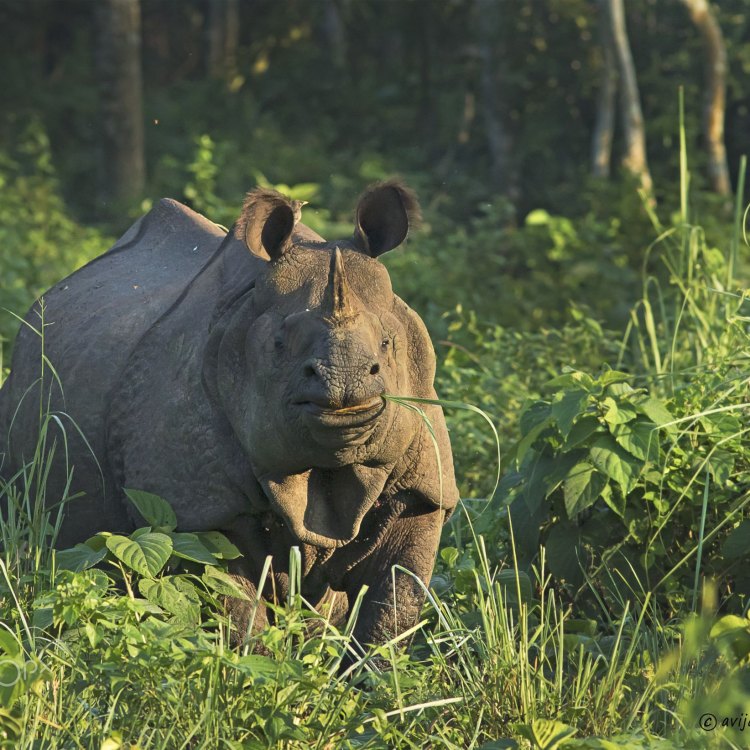
Indian Rhinoceros
- Adult Size: Approximately 1.7 to 2.4 tons
- Average Lifespan: 35 to 45 years
- Reproduction: Sexual
- Reproductive Behavior: Males fight for dominance and mate with females
- Sound or Call: Does not make vocalizations
- Migration Pattern: Non-migratory
- Social Groups: Solitary or small family groups
- Behavior: Generally peaceful but can be aggressive when threatened
- Threats: Poaching and habitat loss
- Conservation Status: Vulnerable
- Impact on Ecosystem: Key species for maintaining the grassland ecosystem
- Human Use: Poaching for horn and tourism
- Distinctive Features: Single horn on the snout and folds of skin around the neck
- Interesting Facts: They are the largest of the Asian rhino species
- Predator: No natural predators
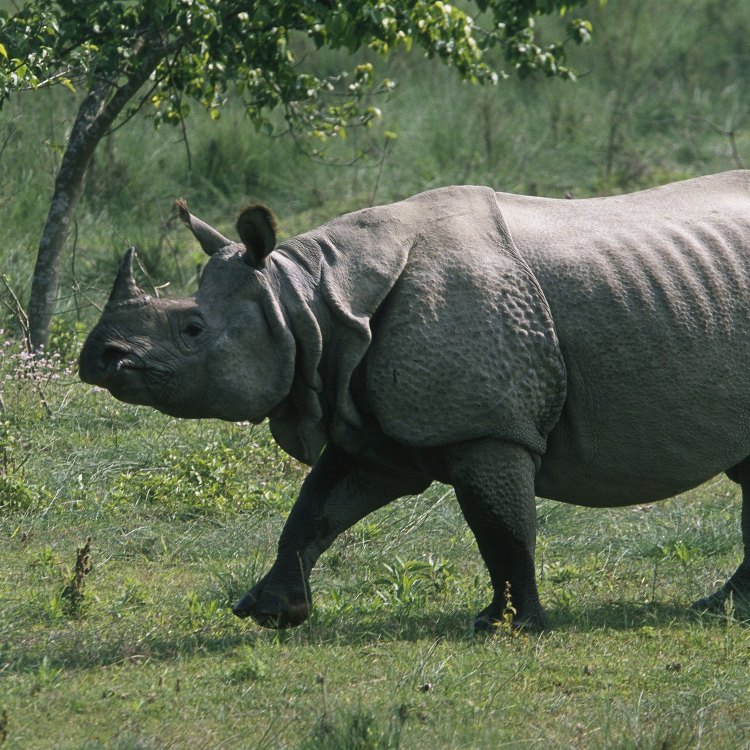
Rhinoceros unicornis
The Mighty Indian Rhinoceros: A Magnificent and Endangered Species
The Indian Rhinoceros, also known as the Great One-horned Rhinoceros, is a majestic and powerful creature that has roamed the grasslands of the Indian subcontinent for centuries. These magnificent creatures are one of the largest land animals in Asia and hold great significance in the cultural and ecological landscape of the region. They have been the subject of myths, folklore, and admiration, but sadly, today, the Indian Rhino is facing the threat of extinction due to poaching and habitat loss. In this article, we will delve deep into the world of the Indian Rhinoceros, exploring its size, behavior, threats, and unique features, and understanding its role in the ecosystem PeaceOfAnimals.Com.Size and Age
The Indian Rhinoceros is a massive animal, with adults weighing between 1.7 to 2.4 tons, making them one of the heaviest land animals in Asia. They can grow up to 13 feet in length and reach a height of 6 feet at the shoulder. These impressive creatures have a distinctive armor-like skin covering their bodies, which is a grey-brown color with folds of skin around the neck and shoulders.In terms of lifespan, Indian Rhinos have an average life expectancy of 35 to 45 years. However, in captivity, they can live up to 50 years. Their long lifespan is due to the fact that they have no natural predators in their habitat.
Reproduction and Social Behavior
Indian Rhinos reach sexual maturity at around 6 to 7 years of age Ibizan Hound. Like most rhino species, they have a monogamous mating system, where a male and female form a lifelong bond and mate exclusively with each other. During the mating season, males engage in aggressive fights to establish dominance and gain the right to mate with a female. These fights can be quite intense, with the two males using their single horn to push and shove each other.Females give birth to a single calf after a gestation period of 15 to 16 months, and the calves stay with their mothers until they are 2 to 3 years old. Indian Rhinos are generally solitary creatures, with females and their calves forming small family groups. However, they can also be found living in pairs or as bachelor groups. It is rare to see large groups of Indian Rhinos in the wild.
Interestingly, unlike other rhino species, Indian Rhinos do not make vocalizations. They communicate through body language, such as posturing, head shaking, and flapping their ears. They also use strong scents to mark their territory and communicate with other rhinos.
Migration Patterns
Unlike many other large mammals, Indian Rhinos are non-migratory. They do not travel long distances in search of food or water, and they usually stay within their designated territory. This territory can range from 2 to 4 square miles for females and up to 8 square miles for males.Behavior and Threats
Indian Rhinos are known for their generally peaceful demeanor, but they can become aggressive when threatened. Due to their size and thick skin, they have no natural predators, so their main threat comes from humans. Poaching is the most significant threat facing Indian Rhinos. The demand for their horn, which is believed to have medicinal properties, has led to a sharp decline in their population.Habitat loss is also a significant threat to Indian Rhinos. As human populations continue to expand, forests and grasslands are being cleared for agriculture, infrastructure, and other human activities, leaving the Indian Rhinos with smaller and fragmented habitats.
Due to these threats, the Indian Rhino has been classified as a Vulnerable species by the International Union for Conservation of Nature (IUCN). The current population of Indian Rhinos is estimated to be around 3,550 individuals, with the majority living in protected sanctuaries and national parks.
Conservation and Impact on Ecosystem
The Indian Rhinoceros is considered a key species for maintaining the grassland ecosystem in which they live. They play a crucial role in dispersing seeds, maintaining grasslands, and creating watering holes for other animals. Additionally, their large size and grazing habits prevent any one plant species from dominating the habitat, therefore promoting species diversity.Conservation efforts for the Indian Rhino have been focused on protecting their natural habitats and increasing anti-poaching measures. Several protected areas, such as the Kaziranga National Park in India, have been established to provide a safe haven for these magnificent creatures. Rhino translocations, where rhinos are moved to new locations to help establish new populations, have also been successful in safeguarding the species.
Human Use and Distinctive Features
Sadly, the Indian Rhino is also highly valued by humans for its horn, which is believed to have medicinal properties and is also used as an ingredient in traditional medicine in some cultures. This demand has fueled the illegal trade of rhino horns, leading to the poaching of these animals.The Indian Rhino has distinctive features that make it stand out from other rhino species. As their name suggests, they have a single horn on their snout, unlike the African species, which have two horns. Their skin is also unique, with folds around the neck and shoulders, giving them an almost prehistoric look.
Interesting Facts
The Indian Rhino is an intriguing creature, with many unique characteristics and behaviors. Here are some interesting facts about this magnificent species:- Indian Rhinos are excellent swimmers and can submerge for up to several minutes at a time, using their horn as a snorkel.
- They are the largest of the Asian rhino species, with the Sumatran Rhino being the smallest.
- As solitary creatures, Indian Rhinos have a wide range of vocal and non-vocal communication methods, such as snorting, whistling, honking, and head shaking.
- Compared to other rhino species, Indian Rhinos have a more social hierarchy, with females ranking higher than males.
Conclusion
The Indian Rhino is truly a magnificent animal, with its massive size, unique features, and important role in the ecosystem. However, this iconic species is facing significant threats from human activities, particularly poaching and habitat loss. It is our responsibility to protect and conserve these creatures to ensure their survival for generations to come.Through efforts such as conservation, education, and anti-poaching measures, we can help secure a future for the Indian Rhino and preserve the grassland ecosystem that relies on them. As the largest of the Asian rhino species, it is our duty to recognize and appreciate the beauty and importance of the Indian Rhino and take action to protect this vulnerable species.
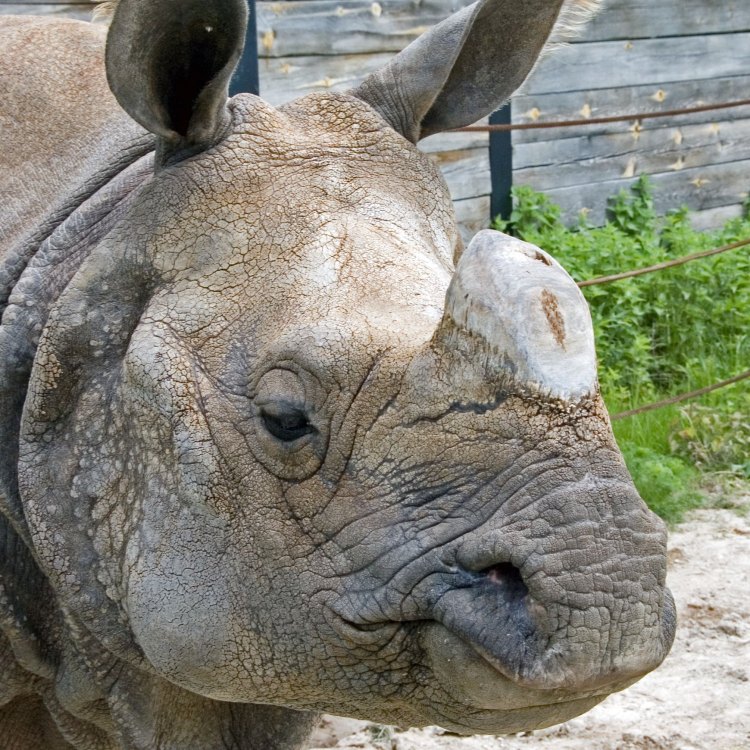
The Majestic Indian Rhinoceros: A True Symbol of Resilience
Disclaimer: The content provided is for informational purposes only. We cannot guarantee the accuracy of the information on this page 100%. All information provided here may change without prior notice.





